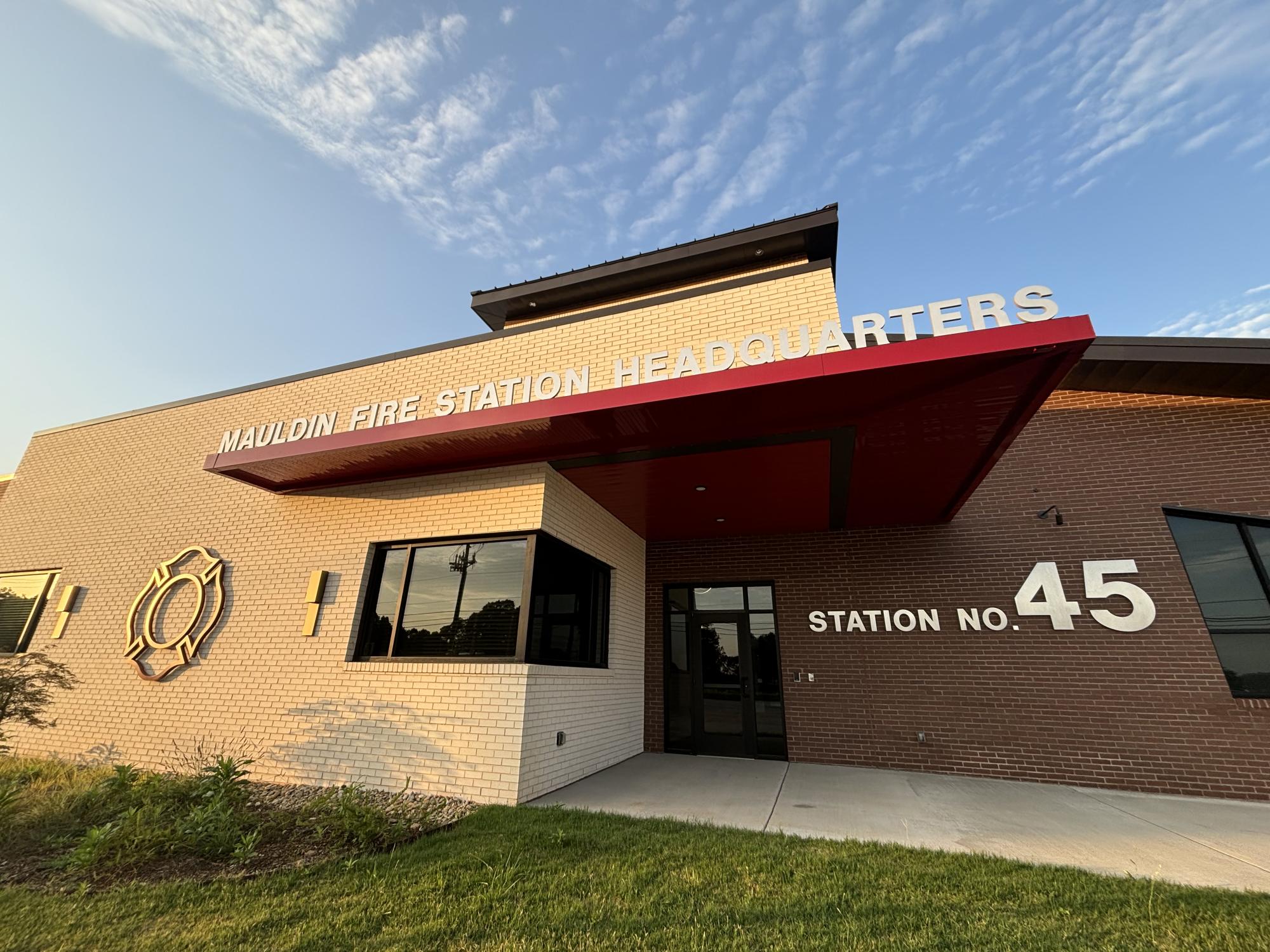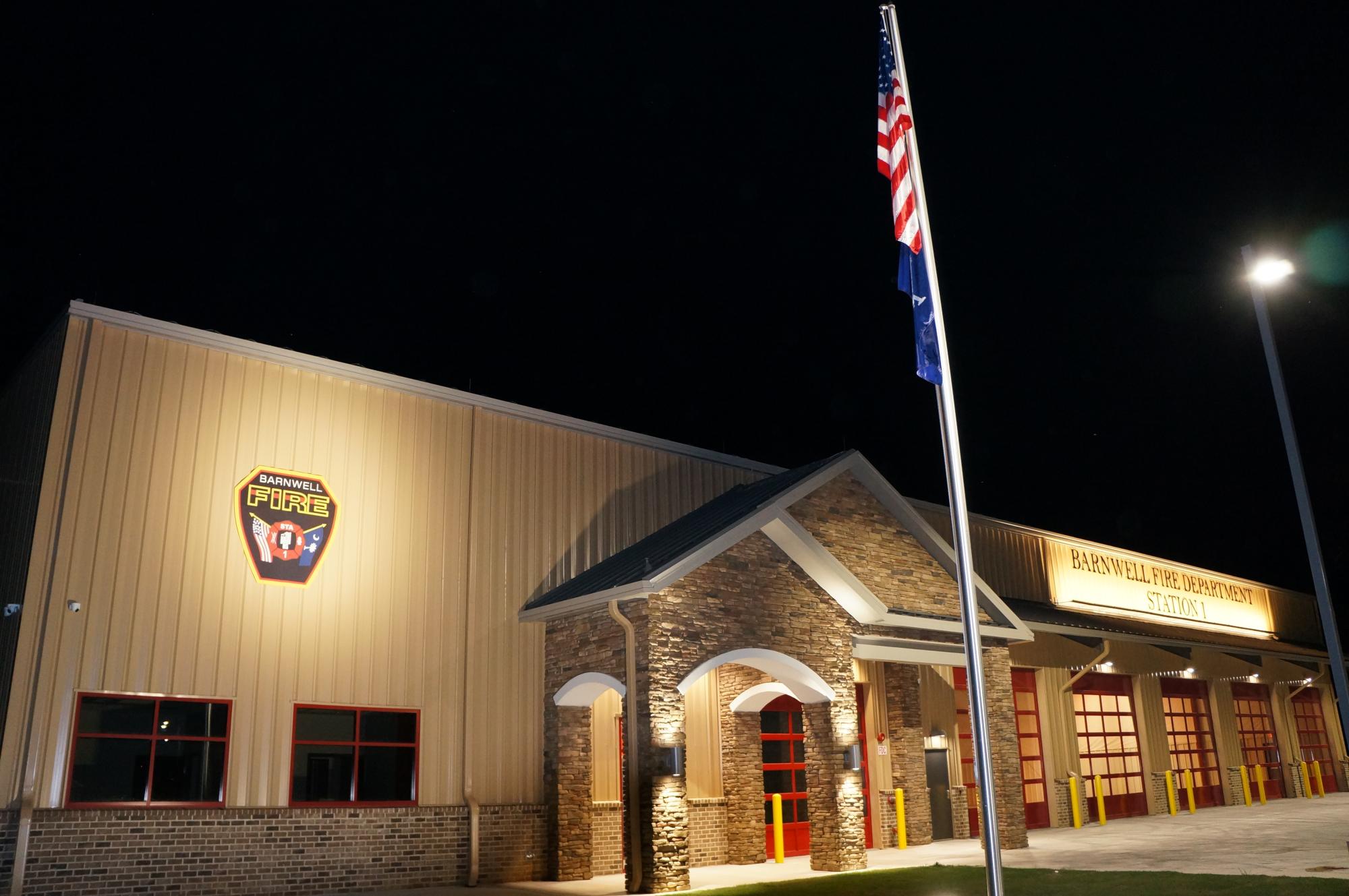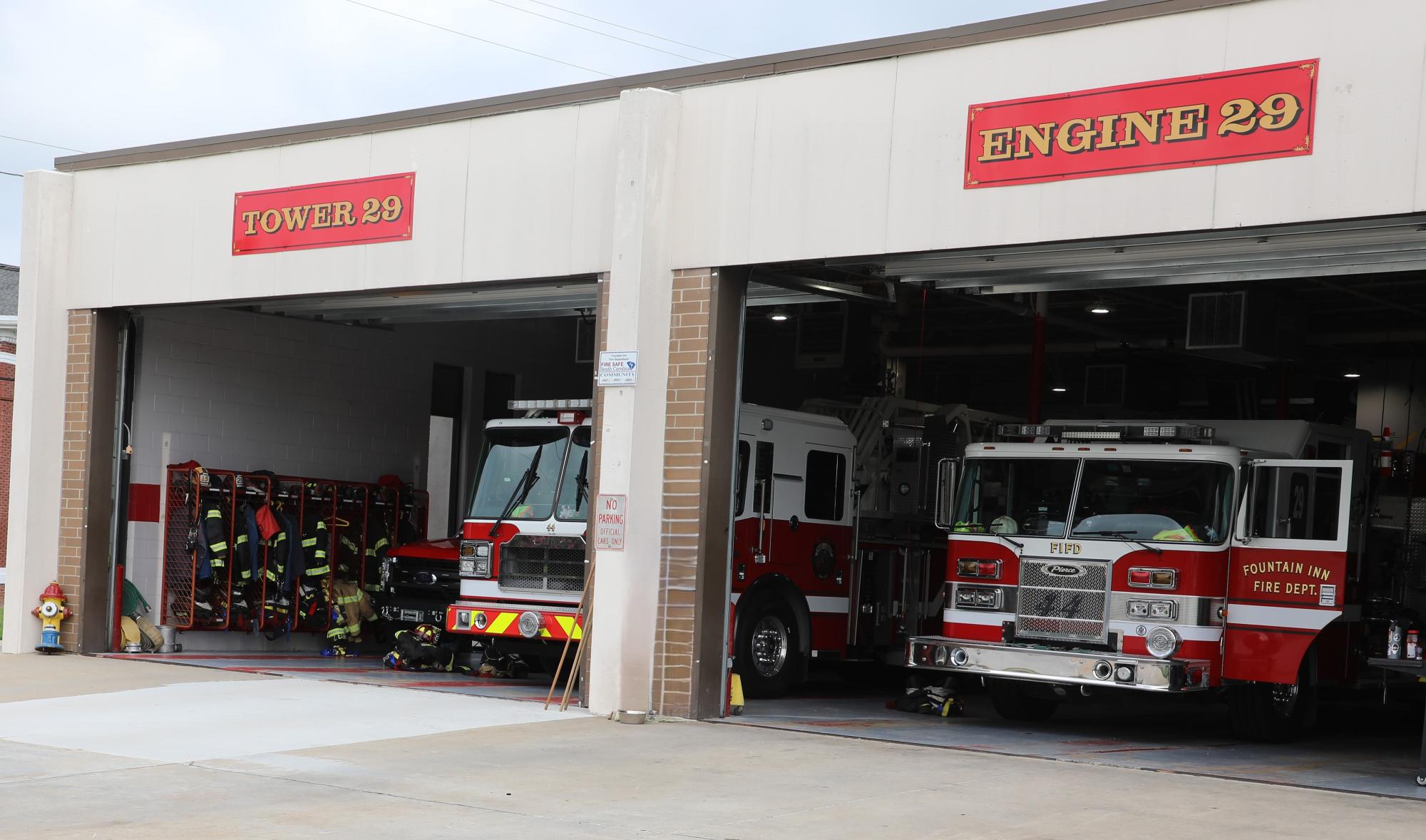As many cities and towns in South Carolina grow rapidly, municipalities have realized the need for creative funding and design solutions to enhance their fire protection offerings. A long-standing issue for local governments, securing adequate funding and incorporating modern design with functionality are some of the most pressing concerns.
Many modern fire stations and headquarters are equipped with state-of-the-art training facilities, separate decontamination washrooms, and spacious living quarters, in addition to classrooms and gathering spaces. The cities of Mauldin, Barnwell and Fountain Inn are among those leading the way of this new frontier of fire stations.
Mauldin continues to experience exponential growth, with the population estimated to exceed 35,000 residents — an increase of 7,000 — by 2030. According to City Administrator Seth Duncan, future growth was one of the key factors that went into the city’s new fire headquarters, which opened in April 2024.

The new headquarters of the Mauldin Fire Department has a decontamination room
and a community training room. Photo: City of Mauldin.
“The City of Mauldin has been operating four fire stations for a number of years now, and found that one of our oldest, which served as our headquarters, was needing to be upgraded, but also needed to expand with our ever-growing community,” Duncan said.
He added that the city has started receiving more calls for service on its western side.
“A lot of the work that went into the design was focused on growth and the future and making sure that this facility would be sufficient to meet the needs of our growing community for the next 25 to 50 years,” he said.
To raise the $7.5 million needed to realize the new fire headquarters, the city sought out funding, first through Greenville County and its fire service area.
“[The city] worked with the county to create the funding necessary, both through some county issuance of bonds but also the city use of some [American Rescue Plan Act] funding and the Installment Purchase Revenue Bonds,” said Duncan.
Working with construction firm The Cloverleaf Group, LLC, and Stewart Cooper Newell Architects, the city broke ground on this capital project.
“Both have extensive experience in building and designing fire stations and I think that’s one of the keys to any successful capital project,” said Duncan.
Fire Chief Brian McHone, the 27-year Mauldin fire department veteran who is currently going into this fifth year at the helm, agreed.
“The main thing is getting a good architect that actually builds fire stations,” he added.
The over 20,000 square-foot facility can accommodate two companies, a ladder company, rescue company, or both. McHone noted that the new headquarters has a dedicated decontamination room on its own filtration system, as well as training props and a community training room that can hold up to 30 people for anything from homeowners association meetings to South Carolina Fire Academy classes.

The City of Barnwell opened its new fire department headquarters
in April 2023. Photo: City of Barnwell.
The City of Barnwell celebrated the launch of its new fire headquarters in March 2023, after funding kept the project from moving forward in 2020.
“We started out with state appropriations for $350,000 several years ago that we originally put into a fund for renovating our [existing] fire station,” said City Administrator Lynn McEwen.
Retired Chief Tony Dicks added that back around 2000, the plan was to consolidate the fire and police facilities, but the property was not large enough to accommodate both.
A 1% capital improvement sales tax was implemented, which created funds to build a joint facility, starting with the police department.
“The police department got a separate facility basically across the street from our fire station, and once [the city] completed that, then our goal was to try to find a way to build a fire station [and] complete the same half of the public safety phase of this project,” Dicks said.
Adding to this, McEwen said that the city received $2 million from the state’s U.S. Department of Energy settlement for the Savannah River Site in 2020.
“It may have been more of luck than strategy,” she said. “We also utilized the [American Rescue Plan Act] funding that had been sent down from the federal government, and we also received another state appropriation.”
Finally, to finish the project, the city secured a local general obligation bond.
“And so, we were able to hire a contractor to come in with his architect, and they set out with us and started the process of trying to put together a fire station in the most economical way possible but yet fulfill those requests we had when it comes down to needs and square footage,” said Dicks.
Improving the overall design was paramount. Designated areas for search and rescue training, ladder skills training, and a 40-seat classroom went into the design. The city’s police department also has space to train.
“The city can use [the classroom] with public works, so we have a large meeting room [that] can serve as an emergency operations center for the city, where, if we have a disaster in place or we have a hurricane evacuation going through our town, we can operate out of there and manage our public works, our police department, fire department and our administrative sections of our city,” Dicks stated.

Back in the Upstate, the City of Fountain Inn plans to build a third fire station and a new training facility in the near future, once additional funding is acquired. Fire Chief Russell Alexander explained that the new facility will have some mixed use in the design, with a larger training room that can convert into a community room for meetings, as well as a police substation.
Assistant City Administrator Russell Slatton added that the layered sources of funding came from various entities, including an earmark from the state for $3.5 million in last year’s budget, which, he noted, would be reserved for construction of the training facility in the station.
“That is not going to be enough to finish construction of these two projects, so we are currently working with Greenville County and other methods to try and find other ways to get funding to finish these projects,” he added.
Current growth for Fountain Inn is now estimated at about 1,000 residents per year. The addition of the new fire station in one of the fastest-growing areas that still remains rather isolated will help service that area with fire protection without the need to traverse a narrow two-lane road.
In terms of the growth of Fountain Inn, Alexander noted that the addition of a new fire station and training facility will benefit the city by reducing response times, increasing its staff to better protect its residents, and by keeping employees — its most valuable assets — safe.
Fire stations and fire headquarters remain cornerstones in the communities they serve. With modern and practical design features that enhance the important work of firefighters and first responders, as well as mixed use elements that can accommodate for training and future growth, municipalities are using layered funding sources to realize new stations and headquarters where their employees and volunteers can thrive.
